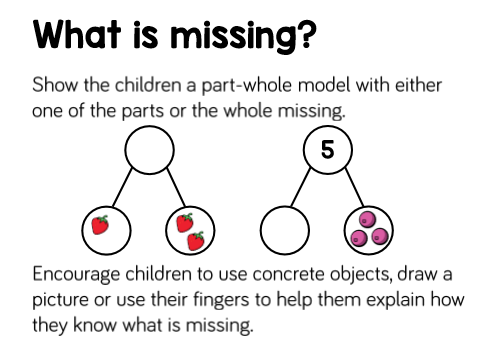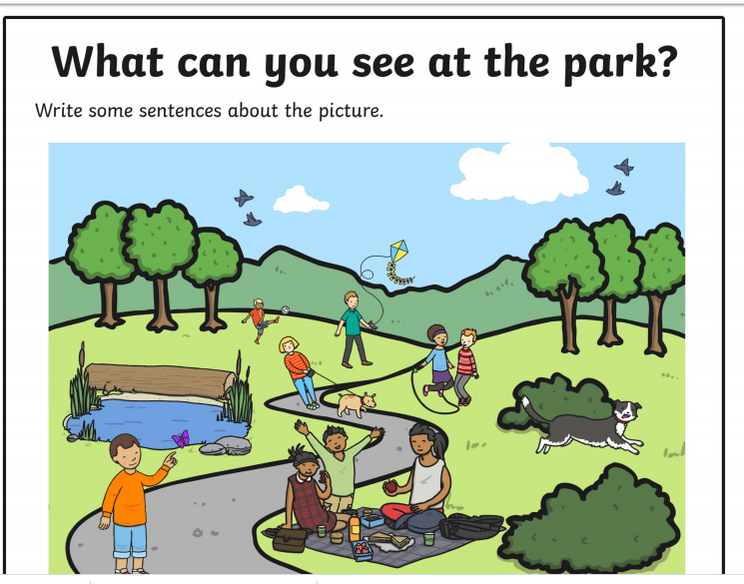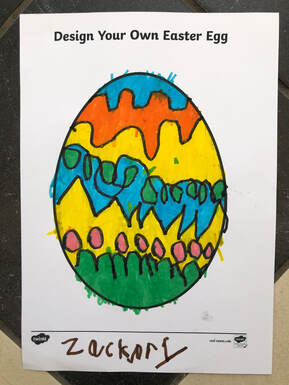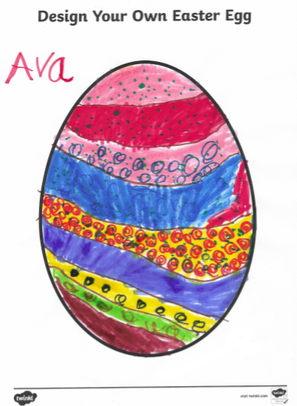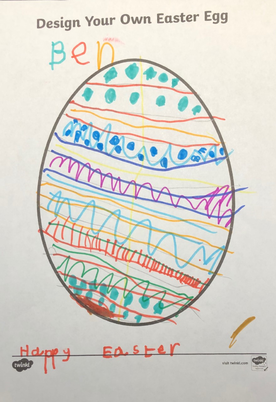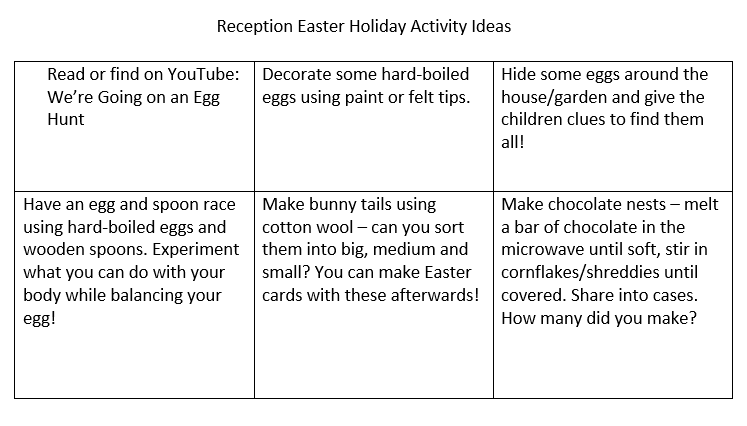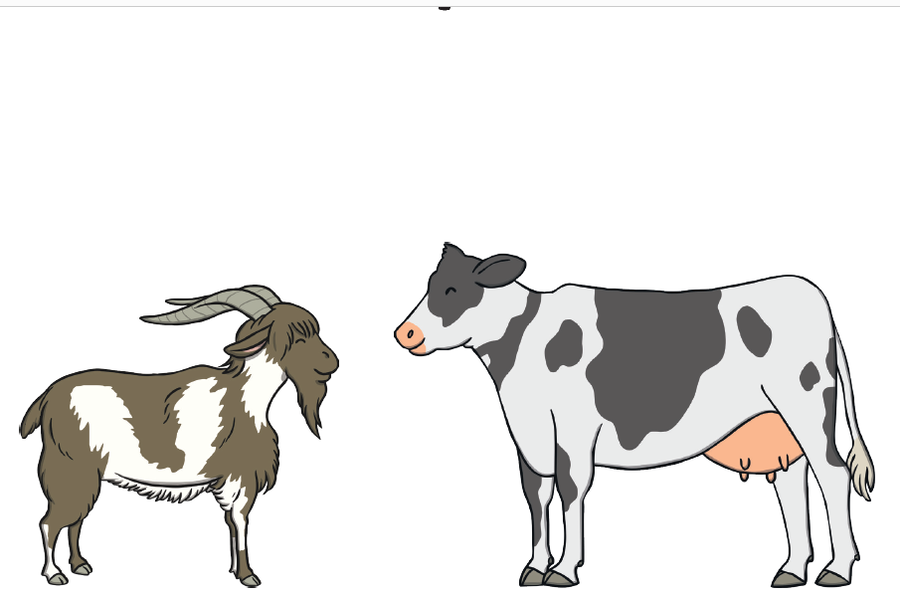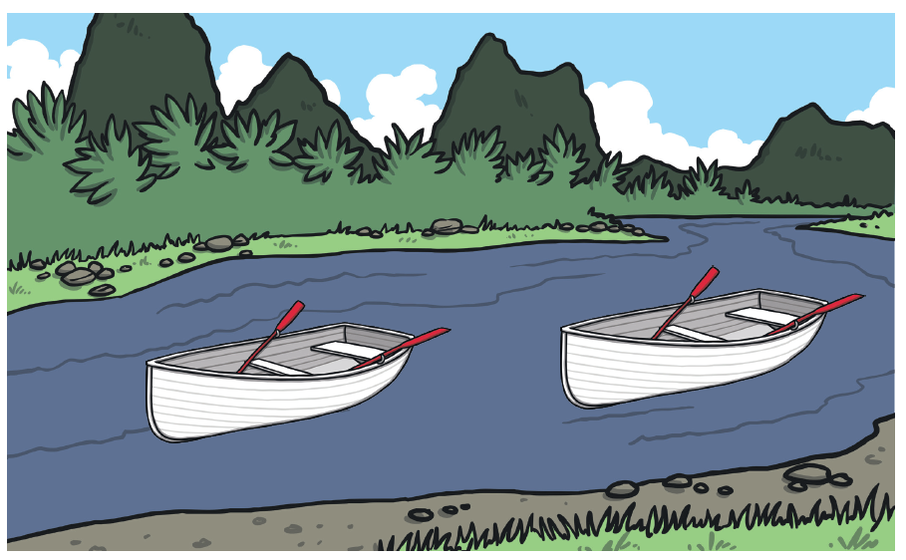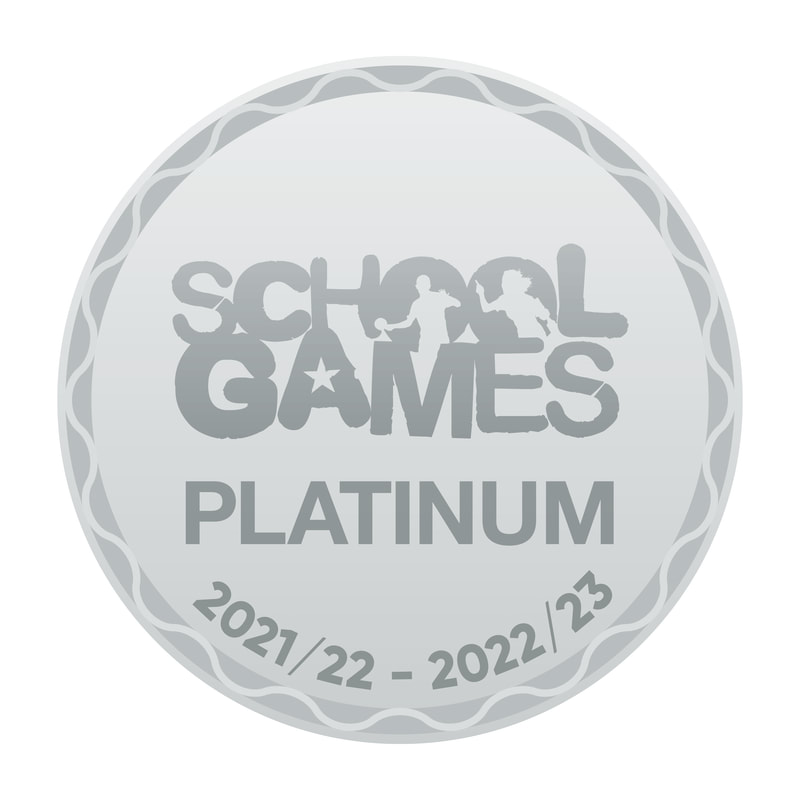Reception - Previous Lessons |
Phonics - Friday 24th April
Firstly, click on the following link and go over phase three sounds.
https://new.phonicsplay.co.uk/resources/phase/3/flashcards-speed-trials
Username: march20
Password: home
Next, go to Oxford owl and log in. It is free, but you do need to set up an account to access the books. Then go to the free ebooks and find;Ant and The Baby. The link below will take you to the book if you are logged in to oxford owl.
https://www.oxfordowl.co.uk/api/digital_books/1160.html
Read the book and complete Activity 1 and Activity 2.
If you would like to challenge yourself further try read Code- The Web.
https://www.oxfordowl.co.uk/api/digital_books/1439.html
Then answer the questions, writing in full sentences in your books.
1) What did Cat and Max see on the visit?
2) On page 15 is uses the word ‘vast’ what do you think this means?
3) What did Max do to stop the bug?
https://new.phonicsplay.co.uk/resources/phase/3/flashcards-speed-trials
Username: march20
Password: home
Next, go to Oxford owl and log in. It is free, but you do need to set up an account to access the books. Then go to the free ebooks and find;Ant and The Baby. The link below will take you to the book if you are logged in to oxford owl.
https://www.oxfordowl.co.uk/api/digital_books/1160.html
Read the book and complete Activity 1 and Activity 2.
If you would like to challenge yourself further try read Code- The Web.
https://www.oxfordowl.co.uk/api/digital_books/1439.html
Then answer the questions, writing in full sentences in your books.
1) What did Cat and Max see on the visit?
2) On page 15 is uses the word ‘vast’ what do you think this means?
3) What did Max do to stop the bug?
Math Lesson- Friday 24th April
Today we will be continuing with adding. Use the part whole models in your pack or draw one on some paper. Give the children a number for the whole from 1-10 or 1-20, depending on your child. Can they find different ways to make that number using the part whole models? Can they decide what resources they would like to use? – Objects, draw pictures, numicon, etc.
Draw some part whole models with one part missing:
Draw some part whole models with one part missing:
Hot – Have a go at this problem. You need to use your adding skills to work out what happens when the numbers go in the box… https://nrich.maths.org/7819
Maths Lesson - Thursday 23rd April
Use the numicon you printed before (or download and print again below). Show the children the numicon that represents 10 – do they know it is a 10? Do they know how to find out? Explain that they are going to combine 2 other numicon to see if they can make 10. Get them to choose a numicon – e.g. 8. Can they compare it to the 10 and see what other numicon shape they need to make 10? When they have matched them all up, go through them and see if they can say the number combinations – 1 and 9, 2 and 8… What number do we add to 10 to make 10? Do they know its zero?
They can record these number sentences in their book. If they have worked systematically, and written them in order, do they notice a pattern?
OR - Complete the number bonds sheet below, using fingers, objects or drawing pictures. Write them out as number sentences as well.
Hot - Can you find the answer to the problem below? Tell your children a new problem, can they find the answer?
Miss Davies has got 6 sweets.
Miss Caple has got less sweets than Miss Davies.
They have 10 sweets altogether. How many sweets does Miss Caple have?
They can record these number sentences in their book. If they have worked systematically, and written them in order, do they notice a pattern?
OR - Complete the number bonds sheet below, using fingers, objects or drawing pictures. Write them out as number sentences as well.
Hot - Can you find the answer to the problem below? Tell your children a new problem, can they find the answer?
Miss Davies has got 6 sweets.
Miss Caple has got less sweets than Miss Davies.
They have 10 sweets altogether. How many sweets does Miss Caple have?
| numicon1.pdf | |
| File Size: | 34 kb |
| File Type: | |
| number_bonds_to_10.pdf | |
| File Size: | 441 kb |
| File Type: | |
Phonics Lesson - Thursday 23rd April
Please follow the link below. Choose Phase 3 mixed vowel phonemes, and then have a go at reading the words. Try the game more than once, so that the digraphs are secure.
https://www.ictgames.com/mobilePage/helpAHedgehog/index.html
Have a look at the picture below. What can you see? Write some sentences about the picture, or write a story about what is happening. When writing about the picture think about, what everyone is doing, what the weather is like, what can they see or hear. Use your phonics to write the words. Remember to ; Think it, Say it Write it.
Eg The black and white dog is running on the grass. There is a …..
https://www.ictgames.com/mobilePage/helpAHedgehog/index.html
Have a look at the picture below. What can you see? Write some sentences about the picture, or write a story about what is happening. When writing about the picture think about, what everyone is doing, what the weather is like, what can they see or hear. Use your phonics to write the words. Remember to ; Think it, Say it Write it.
Eg The black and white dog is running on the grass. There is a …..
Math Lesson- Wednesday 22nd April
We are going to be continuing with adding. Today we would like you to use a number track to add up.
Create a number track from 1-10 or 1-20 (parents choose the highest number to reflect your child's ability). When writing the number track, space the numbers out slightly so the children can jump from one number to the next. This is a great opportunity for the children to practice their number formation.
Parents- tell the children a story about a pond. For example there were 2 frogs in the pond and 3 more frogs jumped in, How many frogs are in the pond now? Remind the children to start on 2 and count the jumps, not the number you started on (they should remember this from class). Repeat with at least 3 further sums adding on different numbers of frogs. Can they write the number sentence to match?
Spicy Challenge- Complete the NumberBlocks Quiz online?
https://www.bbc.co.uk/cbeebies/puzzles/numberblocks-adding-up-quiz
Hot challenge- Complete the work sheet to challenge yourself even more.
Create a number track from 1-10 or 1-20 (parents choose the highest number to reflect your child's ability). When writing the number track, space the numbers out slightly so the children can jump from one number to the next. This is a great opportunity for the children to practice their number formation.
Parents- tell the children a story about a pond. For example there were 2 frogs in the pond and 3 more frogs jumped in, How many frogs are in the pond now? Remind the children to start on 2 and count the jumps, not the number you started on (they should remember this from class). Repeat with at least 3 further sums adding on different numbers of frogs. Can they write the number sentence to match?
Spicy Challenge- Complete the NumberBlocks Quiz online?
https://www.bbc.co.uk/cbeebies/puzzles/numberblocks-adding-up-quiz
Hot challenge- Complete the work sheet to challenge yourself even more.
| hot_math.docx | |
| File Size: | 20 kb |
| File Type: | docx |
Phonics Lesson- Wednesday 22nd April
Today we will be looking at the diagraphs oa and igh. Can you think of any words with the oa or igh diagraph?
Click on the link below. Choose the oa and igh diagraphs to complete the game. Can you find out if they're fake words or real words?
https://www.ictgames.com/mobilePage/poopDeck/
Complete the following worksheet by printing it off and writing the words for the pictures or draw the pictures and write the word next to it.
Which digraphs did you use? Can you write any other words with those digraphs?
Click on the link below. Choose the oa and igh diagraphs to complete the game. Can you find out if they're fake words or real words?
https://www.ictgames.com/mobilePage/poopDeck/
Complete the following worksheet by printing it off and writing the words for the pictures or draw the pictures and write the word next to it.
Which digraphs did you use? Can you write any other words with those digraphs?
| igh_or_oa.docx | |
| File Size: | 278 kb |
| File Type: | docx |
Math Lesson- Tuesday 21st April
In Maths we would like you to start by showing the children a coat hanger with 7 pegs attached or you could use beads and string or some toy cars (anything that slides ). Show them we can move some pegs to one side and some to the other- now we have two groups. Do we still have the same amount altogether? Count how many are in each group and discuss the number sentence- e.g 4 add 3 is the same as 7. Once they understand how they can use the coat hanger and pegs independently, get them to see how many ways they can make 7. Record the number sentences.
Spicy Challenge: Add the numicon together to find the answer. Can you subitise the numicon before you count the dots? Do you know what number it represents just by looking at the pattern?
Hot Challenge: Problem solving sheet. Children can decide what they would like to use to solve the word problems- loose parts, fingers, drawing, number line, etc. Do they know what to do without being prompted? Can they choose their own resources? They may need some help reading the word problems.
Spicy Challenge: Add the numicon together to find the answer. Can you subitise the numicon before you count the dots? Do you know what number it represents just by looking at the pattern?
Hot Challenge: Problem solving sheet. Children can decide what they would like to use to solve the word problems- loose parts, fingers, drawing, number line, etc. Do they know what to do without being prompted? Can they choose their own resources? They may need some help reading the word problems.
| hot_maths_challenge.pdf | |
| File Size: | 189 kb |
| File Type: | |
| spicy_challenge.pdf | |
| File Size: | 61 kb |
| File Type: | |
Phonics lesson- Tuesday 21st April
Today we would like you click on the following links and complete the activities.
https://new.phonicsplay.co.uk/resources/phase/3/flashcards-speed-trials
(Remember the username and password for phonics play are : march20 home)
Read the clue and click on the letter to make the word.
https://www.bbc.co.uk/cbeebies/puzzles/alphablocks-missing-letter-quiz
https://uk.ixl.com/ela/reception/choose-the-lowercase-letter-that-matches-harder-letters
Read the sentence and put in correct capital letter.
https://uk.ixl.com/ela/year-1/capitalise-the-first-letter-of-a-sentence
What is the picture about? Read and click on sentence that matches.
https://uk.ixl.com/ela/year-1/what-is-the-picture-about
NOW; write the alphabet (in your books) in both upper and lower case, remember to start at the top and finish at the bottom.
https://new.phonicsplay.co.uk/resources/phase/3/flashcards-speed-trials
(Remember the username and password for phonics play are : march20 home)
Read the clue and click on the letter to make the word.
https://www.bbc.co.uk/cbeebies/puzzles/alphablocks-missing-letter-quiz
https://uk.ixl.com/ela/reception/choose-the-lowercase-letter-that-matches-harder-letters
Read the sentence and put in correct capital letter.
https://uk.ixl.com/ela/year-1/capitalise-the-first-letter-of-a-sentence
What is the picture about? Read and click on sentence that matches.
https://uk.ixl.com/ela/year-1/what-is-the-picture-about
NOW; write the alphabet (in your books) in both upper and lower case, remember to start at the top and finish at the bottom.
Latest Phonics Lesson - Monday 20th April
Today, we would like you to play Lotto.
Turn all the pictures and words face down, in turn with your partner turn the cards over, can you find the word or picture to match? The person with the most pairs wins. Alternative; If you have no printer, write the word in your book and draw the correct picture next to it.
Today, we would like you to play Lotto.
Turn all the pictures and words face down, in turn with your partner turn the cards over, can you find the word or picture to match? The person with the most pairs wins. Alternative; If you have no printer, write the word in your book and draw the correct picture next to it.
| phonics_20.04.20.docx | |
| File Size: | 1292 kb |
| File Type: | docx |
Latest Maths Lesson - Monday 20th April
Listen to Mr Gumpy's outing from the link below. Talk to the children about adding one more and how this relates to counting. When another animal gets onboard, we count on one more, we add one more.
Activity: Set up your own pretend boat. You could use cushions on the floor as seats and soft toys to add more people onto the boat or you could get creative and make a boat from paper or cardboard. Encourage your children to use the language first, then and now. 'First, there was one person on the boat. Then, one more person got on. Now, there are two people on the boat.'
Challenge: Can they record their findings?
You could write the headings (first, then, now) and they could record the numbers under the correct heading with real objects, pictures or numerals.
Can they write the number sentence to match? What if two people got on the boat at the same time?
During the Easter holidays, we have provided a competition for you to have a go at entering! Please see the picture below. Once you have completed your entry, send it to us via email. The top 3 entries will be displayed on the website! Good luck!
| easter_egg_template.pdf | |
| File Size: | 162 kb |
| File Type: | |
Previous Lessons
Phonics Lesson - Friday 3rd April
Draw a picture of something you did yesterday (in your book). Then make a diary entry in your book and write down what you did yesterday. Remember, “Think it, Say it, and Write it”
Don’t forget to segment the words slowly and clearly, writing each sound down as you hear it. Remember all digraphs, you can use the work sheets you already have to support this.
You can begin with “Yesterday ………
See if you can use words other than “I went….”
*After, then, next, later, after dinner,
Draw a picture of something you did yesterday (in your book). Then make a diary entry in your book and write down what you did yesterday. Remember, “Think it, Say it, and Write it”
Don’t forget to segment the words slowly and clearly, writing each sound down as you hear it. Remember all digraphs, you can use the work sheets you already have to support this.
You can begin with “Yesterday ………
See if you can use words other than “I went….”
*After, then, next, later, after dinner,
Maths Lesson - Friday 3rd April
Please download the link below from White Rose Maths to find your activities for the day.
Please download the link below from White Rose Maths to find your activities for the day.
| white_rose_maths.pdf | |
| File Size: | 518 kb |
| File Type: | |
Latest Phonics Lesson - Thursday 2nd April
Today, please follow the link to go to Phonics Play and play the game Pick a picture. Start with Phase 4 then Phase 3 Digraphs. Please complete this twice, and then complete the sheets. If you have no printer, write the word and draw the picture in your books.
https://www.phonicsplay.co.uk/member-only/PictureMatch.html
Remember: username march20, password home
Today, please follow the link to go to Phonics Play and play the game Pick a picture. Start with Phase 4 then Phase 3 Digraphs. Please complete this twice, and then complete the sheets. If you have no printer, write the word and draw the picture in your books.
https://www.phonicsplay.co.uk/member-only/PictureMatch.html
Remember: username march20, password home
| circle_the_word_using_ai-ee-and-igh-digraphs_.pdf | |
| File Size: | 432 kb |
| File Type: | |
Latest Maths Lesson - Thursday 2nd April
Today we would like you to focus on odds and evens.
Explain to the children that quantities that can be shared into two equal groups are even and when there is one left over and the groups are unequal it is odd.
Listen to the story below or watch the Odds and Evens episode of Numberblocks on YouTube.
Follow up activities:
Encourage the children to work out odds and evens independently by using objects. They could have a teddy bear picnic with two teddies. If they had 4 biscuits and shared them equally between the two teddies, would they both get the same? Does that make 4 odd or even? How do they know? What about 5 grapes? Can you make a list of all of the odd numbers and all of the even numbers?
Follow the link to play an odd and even game on topmarks
https://www.topmarks.co.uk/learning-to-count/coconut-odd-or-even
Today we would like you to focus on odds and evens.
Explain to the children that quantities that can be shared into two equal groups are even and when there is one left over and the groups are unequal it is odd.
Listen to the story below or watch the Odds and Evens episode of Numberblocks on YouTube.
Follow up activities:
Encourage the children to work out odds and evens independently by using objects. They could have a teddy bear picnic with two teddies. If they had 4 biscuits and shared them equally between the two teddies, would they both get the same? Does that make 4 odd or even? How do they know? What about 5 grapes? Can you make a list of all of the odd numbers and all of the even numbers?
Follow the link to play an odd and even game on topmarks
https://www.topmarks.co.uk/learning-to-count/coconut-odd-or-even
Latest Phonics Lesson - Wednesday 1st April
Today we would like you to use your phonic knowledge to write some sentences.
Write two sentences for each picture in your book. Remember to “Think it, Say it, Write it” Use your phonics to make your words. Don’t forget capital letters, finger spaces and full stops.
Today we would like you to use your phonic knowledge to write some sentences.
Write two sentences for each picture in your book. Remember to “Think it, Say it, Write it” Use your phonics to make your words. Don’t forget capital letters, finger spaces and full stops.
Latest Maths Lesson - Wednesday 1st April
Today we would like you to focus on measuring length and height.
When making direct comparisons, children often say that something is big or small. Try to encourage your children to be more specific and use mathematical language for length (long, short), height (tall, short), and breadth (wide, narrow).
First, watch the video below and listen to the story. Listen for all of the height/length words!
Then, you could order your teddies or soft toys according to their size.
OR
You could cut and order the bears in the file below.
OR
You could use a non-standard unit of measurement (lego, building blocks) and measure your soft cuddly toys at home. Can you estimate how many bricks long your teddy is?
Today we would like you to focus on measuring length and height.
When making direct comparisons, children often say that something is big or small. Try to encourage your children to be more specific and use mathematical language for length (long, short), height (tall, short), and breadth (wide, narrow).
First, watch the video below and listen to the story. Listen for all of the height/length words!
Then, you could order your teddies or soft toys according to their size.
OR
You could cut and order the bears in the file below.
OR
You could use a non-standard unit of measurement (lego, building blocks) and measure your soft cuddly toys at home. Can you estimate how many bricks long your teddy is?
| ordering_by_size.pdf | |
| File Size: | 3909 kb |
| File Type: | |
Phonics Lesson - Tuesday 31st March
Today we would like you to focus on revising reading and writing using the digraphs we have learnt.
Follow the link and match the word to the picture:
https://uk.ixl.com/ela/year-1/choose-the-word-that-matches-the-picture-ss-ll-ff-zz-ck
Next, match the picture to the sentence:
https://uk.ixl.com/ela/year-1/choose-the-short-a-sentence-that-matches-the-picture
Draw a picture and write a sentence for it in your books.
Today we would like you to focus on revising reading and writing using the digraphs we have learnt.
Follow the link and match the word to the picture:
https://uk.ixl.com/ela/year-1/choose-the-word-that-matches-the-picture-ss-ll-ff-zz-ck
Next, match the picture to the sentence:
https://uk.ixl.com/ela/year-1/choose-the-short-a-sentence-that-matches-the-picture
Draw a picture and write a sentence for it in your books.
Maths Lesson - Tuesday 31st March
Today we would like you to focus on one more/one less.
Please watch the video below.
Do they know that when you find one more, you add one? When you find one less, you take one away?
Follow up:
Can they get a plate and some tweezers (or a peg, or tongs) and put small parts on (cheerios, pasta, buttons, beads, etc.). Can they add one/take away one?
OR
Use a dice (2 to make it more challenging) and find one more/less than the number you roll.
OR
Complete the worksheet below from twinkl.
Today we would like you to focus on one more/one less.
Please watch the video below.
Do they know that when you find one more, you add one? When you find one less, you take one away?
Follow up:
Can they get a plate and some tweezers (or a peg, or tongs) and put small parts on (cheerios, pasta, buttons, beads, etc.). Can they add one/take away one?
OR
Use a dice (2 to make it more challenging) and find one more/less than the number you roll.
OR
Complete the worksheet below from twinkl.
| 1_less_1_more.pdf | |
| File Size: | 108 kb |
| File Type: | |
Phonics Lesson - Monday 30th March
Today we would like you to practise segmenting and blending words with the sounds you have learnt. Please find the document below.
Can you spot which words are real and which are nonsense?
Fill in your key with a different colour for real words and nonsense words and then colour in the correct boxes below. If you cannot download, make a list of the nonsense words and a list of the real words in your books.
Today we would like you to practise segmenting and blending words with the sounds you have learnt. Please find the document below.
Can you spot which words are real and which are nonsense?
Fill in your key with a different colour for real words and nonsense words and then colour in the correct boxes below. If you cannot download, make a list of the nonsense words and a list of the real words in your books.
| real_or_nonsense.docx | |
| File Size: | 57 kb |
| File Type: | docx |
Maths Lesson - Monday 30th March
Today we would like you to focus on doubling numbers up to 10.
Remind the children that doubling means 'twice as many' or 'same again'. Mirrors are a good way to show doubles!
Show them how to find doubles by using our fingers. Say a number (up to 5) and show children that many fingers on one hand, explain to the children that to double you need the same on the other hand. How many have you got altogether? Encourage them to say the sentence: e.g. 'Double 3 is 6. 3+3 is the same as 6.'
Can you use objects / your fingers to work out all the doubles to 10? Record them in your book: 5+5=10.
Alternative activities:
Use duplo/lego to make two towers the same height and add up the total.
Use sets of dominos and add up the totals.
Pair up (clean!!) socks. If you had 3 socks, how many would you have when you double them?
Need a challenge? Follow the link below for a doubling and halving game:
https://www.topmarks.co.uk/Flash.aspx?f=dartboarddoublesandhalves
Today we would like you to focus on doubling numbers up to 10.
Remind the children that doubling means 'twice as many' or 'same again'. Mirrors are a good way to show doubles!
Show them how to find doubles by using our fingers. Say a number (up to 5) and show children that many fingers on one hand, explain to the children that to double you need the same on the other hand. How many have you got altogether? Encourage them to say the sentence: e.g. 'Double 3 is 6. 3+3 is the same as 6.'
Can you use objects / your fingers to work out all the doubles to 10? Record them in your book: 5+5=10.
Alternative activities:
Use duplo/lego to make two towers the same height and add up the total.
Use sets of dominos and add up the totals.
Pair up (clean!!) socks. If you had 3 socks, how many would you have when you double them?
Need a challenge? Follow the link below for a doubling and halving game:
https://www.topmarks.co.uk/Flash.aspx?f=dartboarddoublesandhalves
Phonics Lesson - Friday 27th March
Today we would like you to focus on the 'ow' digraph (as in 'cow'). Please go to the link below, using the username: march20 and password: home. Here you can find the game 'Picnic on Pluto', where you can select Phase 3 and the sound 'ow'. Children should use this game to practise reading 'ow' words and sort them into real and nonsense by dragging them to Obb or Bob.
https://www.phonicsplay.co.uk/member-only/PicnicOnPluto.html
Then, write down three words with the digraph ow in your book.
Today we would like you to focus on the 'ow' digraph (as in 'cow'). Please go to the link below, using the username: march20 and password: home. Here you can find the game 'Picnic on Pluto', where you can select Phase 3 and the sound 'ow'. Children should use this game to practise reading 'ow' words and sort them into real and nonsense by dragging them to Obb or Bob.
https://www.phonicsplay.co.uk/member-only/PicnicOnPluto.html
Then, write down three words with the digraph ow in your book.
Maths Lesson - Friday 27th March
Today we would like you to focus on addition and subtraction.
Please print the numicon from the file below (or make your own!). You can use these in a part whole model or on their own to make addition and subtraction number sentences.
Using the numicon, how many different ways can you make your whole? E.g. How many different ways can you make 7? Record the number sentences in your workbook or on scrap paper.
Keep your numicon safe, as we will use them for another activity!
Today we would like you to focus on addition and subtraction.
Please print the numicon from the file below (or make your own!). You can use these in a part whole model or on their own to make addition and subtraction number sentences.
Using the numicon, how many different ways can you make your whole? E.g. How many different ways can you make 7? Record the number sentences in your workbook or on scrap paper.
Keep your numicon safe, as we will use them for another activity!
| numicon.pdf | |
| File Size: | 34 kb |
| File Type: | |
Phonics Lesson - Thursday 26th March
Today we would like your child to focus on high frequency words (tricky words).
Follow the link below to the Tricky Word Trucks game on phonicsplay. Select 'Phase 3 Tricky Words' or 'Phase 3 All HFW' and choose your vehicle.
https://new.phonicsplay.co.uk/resources/phase/3/tricky-word-trucks
How quickly can you read the tricky words? Try again - did you improve your speed?
If you were unsure of any words, write them down and practise. Can you use any of them in a sentence?
Today we would like your child to focus on high frequency words (tricky words).
Follow the link below to the Tricky Word Trucks game on phonicsplay. Select 'Phase 3 Tricky Words' or 'Phase 3 All HFW' and choose your vehicle.
https://new.phonicsplay.co.uk/resources/phase/3/tricky-word-trucks
How quickly can you read the tricky words? Try again - did you improve your speed?
If you were unsure of any words, write them down and practise. Can you use any of them in a sentence?
Maths Lesson - Thursday 26th March
Today we would like your child to focus on adding and subtracting.
Play the box game. Put some toys one at a time in a box, counting them together as you go, so that the children cannot see them inside. Ask: 'Can you show me on your fingers how many are hidden?' Add one more to the box and ask the children to show you on their fingers how many there are now. Show them the inside of the box, can they count them to check?
To deepen understanding:
What if we add two more?
What if we take one out? Two out?
Can you record how many there were? How many there are now?
Can you write the number sentence to show what we did?
Today we would like your child to focus on adding and subtracting.
Play the box game. Put some toys one at a time in a box, counting them together as you go, so that the children cannot see them inside. Ask: 'Can you show me on your fingers how many are hidden?' Add one more to the box and ask the children to show you on their fingers how many there are now. Show them the inside of the box, can they count them to check?
To deepen understanding:
What if we add two more?
What if we take one out? Two out?
Can you record how many there were? How many there are now?
Can you write the number sentence to show what we did?
Phonics Lesson - Wednesday 25th March
Today we would like your child to focus on the 'ch' and 'sh' digraphs.
First, please follow the link below to watch the 'ch' and 'sh' Alphablocks episode. Ask your children to read the words as they are made.
https://www.youtube.com/watch?v=2ncQwQZJ47E
Then, complete the worksheet attached. Children should match the words to the pictures and try to write the words in the boxes.
Write down a sentence with the word: wish.
Remember: think it, say it, write it.
You should have finger spaces between each word and a full stop at the end of your sentence!
Today we would like your child to focus on the 'ch' and 'sh' digraphs.
First, please follow the link below to watch the 'ch' and 'sh' Alphablocks episode. Ask your children to read the words as they are made.
https://www.youtube.com/watch?v=2ncQwQZJ47E
Then, complete the worksheet attached. Children should match the words to the pictures and try to write the words in the boxes.
Write down a sentence with the word: wish.
Remember: think it, say it, write it.
You should have finger spaces between each word and a full stop at the end of your sentence!
| ch-and-sh-sounds-matching-activi.pdf | |
| File Size: | 377 kb |
| File Type: | |
Maths Lesson - Wednesday 25th March
Today we would like your child to focus on 3D shapes.
Use the document below or draw your own table. First, can you name the 3-D shapes in the table? Then, have a look around the house - how many 'real-life' 3-D shapes can you find to match the ones in your table?
You can either write or draw the household objects in the third column.
Challenge: Can you count and record the number of faces that each shape has?
Today we would like your child to focus on 3D shapes.
Use the document below or draw your own table. First, can you name the 3-D shapes in the table? Then, have a look around the house - how many 'real-life' 3-D shapes can you find to match the ones in your table?
You can either write or draw the household objects in the third column.
Challenge: Can you count and record the number of faces that each shape has?
| identifying_3d_shapes.docx | |
| File Size: | 78 kb |
| File Type: | docx |
Phonics Lesson - Tuesday 24th March
Today we would like your child to focus on the 'igh' trigraph.
Use the document below. Your child can either highlight or write down the words they find that use the 'igh' trigraph.
When they have found the words, can they write down three other words that use 'igh'?
Today we would like your child to focus on the 'igh' trigraph.
Use the document below. Your child can either highlight or write down the words they find that use the 'igh' trigraph.
When they have found the words, can they write down three other words that use 'igh'?
| igh-phoneme-spotter-story_.pdf | |
| File Size: | 505 kb |
| File Type: | |
Maths Lesson - Tuesday 24th March
Today we would like your child to focus on adding to make 10.
To start, please follow the link to watch an episode of Numberblocks.
https://www.bbc.co.uk/iplayer/episode/b08q3zx7/numberblocks-series-2-blast-off
Using your Part Part Whole model or your tens frame, can you use objects to find the different ways to make 10. Can you draw pictures on the PPW model to show how to make 10? Can you write the number sentence on all the ways you can make 10?
Your children will know how to use these resources but if you need any support or ideas then please visit white rose maths to support your child's learning
https://wrm-13b48.kxcdn.com/wp-content/uploads/2020/Reception-Spring.pdf
Today we would like your child to focus on adding to make 10.
To start, please follow the link to watch an episode of Numberblocks.
https://www.bbc.co.uk/iplayer/episode/b08q3zx7/numberblocks-series-2-blast-off
Using your Part Part Whole model or your tens frame, can you use objects to find the different ways to make 10. Can you draw pictures on the PPW model to show how to make 10? Can you write the number sentence on all the ways you can make 10?
Your children will know how to use these resources but if you need any support or ideas then please visit white rose maths to support your child's learning
https://wrm-13b48.kxcdn.com/wp-content/uploads/2020/Reception-Spring.pdf
Phonics Lesson - Monday 23rd March
Today we would like your child to focus on rhyming strings.
Please follow the link below, where your child can listen to the clip and match it to the word that rhymes. Please disable any ad-blocking software before loading the link, or it will not work:
https://uk.ixl.com/ela/reception/choose-the-words-that-have-a-given-ending
After this, please find the file below where they can complete the rhyming lists.
Today we would like your child to focus on rhyming strings.
Please follow the link below, where your child can listen to the clip and match it to the word that rhymes. Please disable any ad-blocking software before loading the link, or it will not work:
https://uk.ixl.com/ela/reception/choose-the-words-that-have-a-given-ending
After this, please find the file below where they can complete the rhyming lists.
| rhyming_lists.docx | |
| File Size: | 364 kb |
| File Type: | docx |
Maths Lesson - Monday 23rd March
Today we are focusing on basic counting.
Can your child:
Count to 20? Count backwards from 20? Count up to 20 objects? Count on from different starting points?
Play I count, you count (you say: 1,2 they say: 3,4 and so on, up to 20. Then in 3's. You say: 1,2,3. They say 4,5,6 and so on, up to 30).
Then, follow the link below to play 'Teddy Numbers'. You can choose which number to count up to, and whether to use numerals or words.
https://www.topmarks.co.uk/learning-to-count/teddy-numbers
Today we are focusing on basic counting.
Can your child:
Count to 20? Count backwards from 20? Count up to 20 objects? Count on from different starting points?
Play I count, you count (you say: 1,2 they say: 3,4 and so on, up to 20. Then in 3's. You say: 1,2,3. They say 4,5,6 and so on, up to 30).
Then, follow the link below to play 'Teddy Numbers'. You can choose which number to count up to, and whether to use numerals or words.
https://www.topmarks.co.uk/learning-to-count/teddy-numbers

